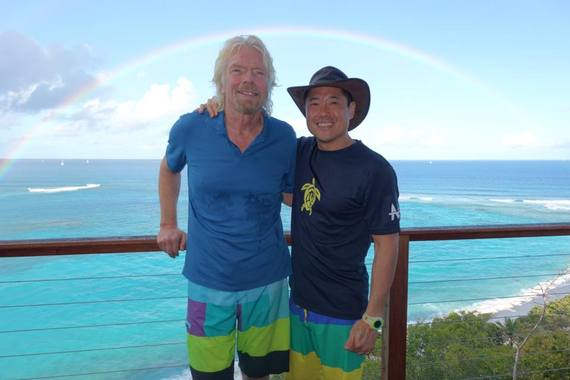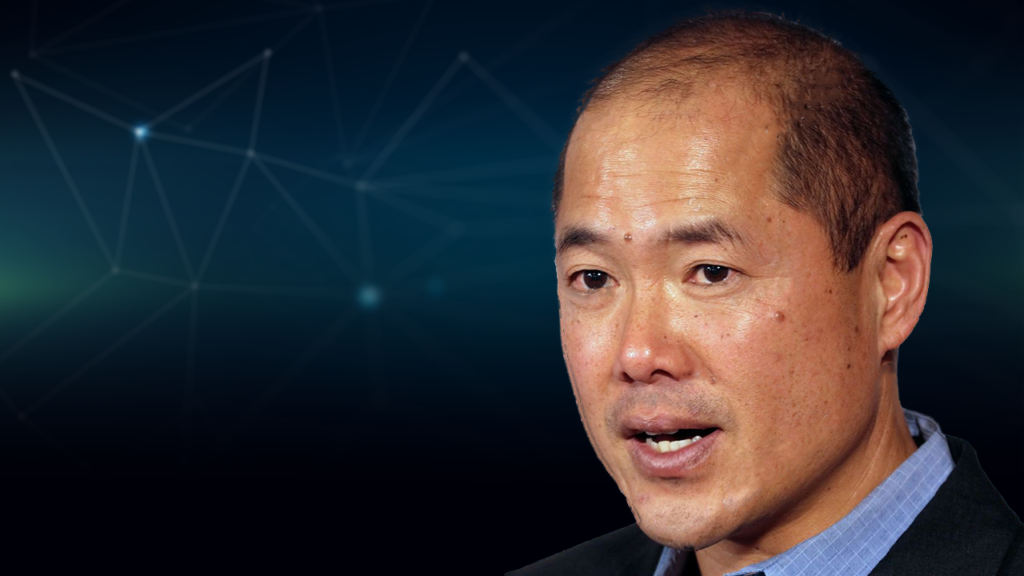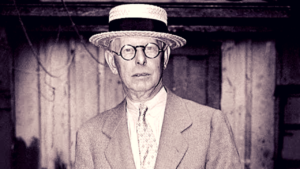Are you a Tech Entrepreneur, not based in the coveted Silicon Valley, looking for Venture Capital for your Start-Up? We have a secret tip for you: Learn Kiteboarding!!

Sounds like a pretty vague and unrealistic advice, Right?
Well, not so much, if you were to know that, learning how to Kiteboard helped Melanie Perkins, the CEO and co-founder of Canva (an online, free to use, design platform) to make it a multi-billion dollar company (valued at $6 billion Source: Techcrunch.com) and become Australia’s third richest woman.

The answer to this puzzle that links technology, Kitesurfing and the Design Platform – Canva, is this week’s TFP profile:
The man who successfully rode two waves – those of Technology and Kiteboarding – to emerge as the Kiteboarding Venture Capitalist a.k.a “KiteVC” – Bill Tai.
Tai, is a Silicon Valley venture capitalist since 1991 and a kite-surfing fanatic who combines the two, whenever possible. He is a Partner Emeritus at Charles River Ventures and has co-founded non-profit ACTAI (Athletes, Conservationists, Technologists, Artists and Innovators) Global (formerly known as MaiTai Global), a professional networking group that merges work, play and philanthropy. He created this unique retreat for investors and kitesurfing enthusiasts that features prominent tech executives eyeing to invest in new startups. ACTAI Global also organizes the Extreme Tech Challenge (XTC), the world’s largest startup competition for addressing global challenges that culminates in a pitch presentation to Richard Branson, Founder of the Virgin Group, on Necker Island!

Many know Tai as a close friend of Richard Branson, an expert in blockchain, the guy who was amongst the first investors in companies like Canva, Zoom and Tweetdeck/ Twitter, and probably the keenest kite surfer one would ever meet. He has had 22 IPOs from his early stage investments and been on the Board of 8 publicly traded companies. Originally trained as a computer chip designer (BSEE, Honors, Illinois), he went on to complete his MBA at Harvard. He is also an Adjunct Professor of ‘Innovation and Economic Development’ at Curtin University in Perth, Australia.
Tai, Kite Surfing and Canva
Melanie Perkin’s Canva, based in Perth, Australia was miles away from Silicon Valley, the start-up mine! Being able to arrange a meeting, let alone receiving a funding, was a mammoth task for Perkins. She had received a “NO” from more than 100 investors. However, an accidental meeting with Bill Tai, at a conference in Perth, came in as a ray of hope.
Tai invited Perkins to come to San Francisco to pitch her idea. He was clearly impressed with her idea. However, he wanted Perkins and her co-founder and partner Cliff Obrecht to begin networking at ACTAI Global, Bill’s unique retreat for investors and kitesurfing enthusiasts. Perkins, who saw this as a great opportunity to build connections and network in the Silicon Valley, decided to take up the dangerous sport so that the next time the group met to hear start-up pitches and write Cheques for early stage funding, she stood a chance to make her elevator pitch! Perkins recollects that every time Tai would ask how the business was going, he would make sure to ask how was the kitesurfing going, too! Kiteboarding, though was not something that she would have taken up naturally, served her well. Before long, the young couple was winning over major investors and building out Canva’s design platform with a fast-growing team of tech engineers. Through ACTAI, the young couple met their tech advisor, a tech co-founder and a tech developer.
Months later, at the close of their first funding round, the company was oversubscribed!
But, how did Kiteboarding become the extreme sport of choice in Silicon Valley?
This traces back to 2003-04 when there was a giant wave of young people starting tech companies in the Silicon Valley. Amidst the fanfare, there were pictures on the internet of Sergey Brin and Larry Page, Founders of tech-giant Google, kiteboarding in the San Francisco Bay Area.
And what could be next!? Everyone wanted to emulate the successful founders which helped KiteBoarding gain massive popularity among tech entrepreneurs in 2004-06.
Tai, who had always been a water athlete, beginning with Sailing, moving to Windsurfing and eventually to Kiteboarding in 2001, was lucky enough for being one of the folks, who had taken to kiting early on as a regular at Third Avenue, San Francisco Bay, which was a spot famous for its proximity to Silicon Valley. His network had always been full of interesting start-up entrepreneurs and his enthusiasm for the sport encouraged a lot of them to join his annual kite camps in Maui, an island in Hawaii (that he organized with Susi Mai). The event offered three to seven days of intense kiteboarding and professional networking. These camps eventually evolved into what the world knows as the ACTAI Global Community – the place to go and the network to be part of, if you were a hot young entrepreneur that wanted to learn to kite surf!
PS: Wait before you start planning your kite surfing trip to ACTAI’s next meet, the tickets are not on sale and you can only participate in them, if you have an invite! Bill has clearly established that the objective of these meets is not to make money but to create a community that can add value to its members!
Kiteboarding, unsurprisingly, became the new “Golf Course” (the place where deals are made) of the Silicon Valley. After all, wouldn’t the Entrepreneurs, investors and engineers want to experiment with sports the way they experiment with new technologies!?
Parallels between Kiteboarding and Start-Up Investing
Even as Bill Tai pursues his quest of wind over water, he is as competitive as venture capitalists come. Being a Venture Capitalist for the past 30 years, he believes what he does for a living is quite fun. He works with creative, passionate people every day who wish to seek his advice and capital to begin technology enabled Start-Up companies. He helps entrepreneurs with the funding required to build, launch and scale their ideas into sustainable businesses.
When asked whether an entrepreneur who also happens to be a kiteboarder, has a higher chance of being able to do business with him, he admits, that it definitely does increase the probability of a first meeting!
This sure does come across as being partisan, however, we may want to give Tai some benefit of doubt as he goes on to highlight some parallels between Kiteboarding and Start-Up Investing! Kiteboarding involves standing on a board over water that is tethered to a kite that looks like a parachute. Riders can go as fast as 55 mph and they often vault 30 feet in the air (some pros hit heights of 70 feet), feeling the kind of adrenaline rush that techies usually get from a successful product launch or initial public offering.
i. Both involve operating in a very dynamic, rapidly-changing environment!
It’s having to learn things that are unwritten. You can’t read a book and start a company. You can’t read a book and be a kiteboarder. You just have to try.
ii. Both require a person to be resilient and be able to quickly recover from failure!
In kiteboarding, every day you are beaten down – but you have to keep at it, waiting for that moment when it all comes together for just a few seconds. You feel like you’re on the top of the world. Start-Ups too, are organizations that fail 99 percent of the time. You recover and go on to achieve some small successes. Then you string together those small successes into a big one.
iii. In Both, ‘Mistakes’ can be extremely costly!
For Start-Ups you risk the time, capital and efforts that have been put in and in kiting, creating potentially dangerous and occasionally fatal situations.
iv. Both require passion to get through the hard part!
Just to enjoy fleeting adrenaline filled moments where everything comes together to create the sensation of FLYING across or above the water in the case of kiteboarding and seeing your Start-Up scale profitably, both experiences are essentially ‘life on the edge of destruction’ in the beginning.
Thus, you shouldn’t be surprised if you see Bill, choose to fund an entrepreneur who’s come up through ACTAI over someone who made a stellar PowerPoint presentation pitch. He believes that there’s a big difference in understanding who an entrepreneur is while they’re going through something so hard – How they learn, How they recover from failure, How they handle stress and it becomes especially important when you are in an environment (start-up) in which you may fail 99 percent of the time!
Tai and the 6 waves of Technology
“I’m basically a builder — while I act as a financier, I’m not somebody that just writes Cheques,” Tai says. “I tend to have ideas in my head about what should exist, and if it doesn’t exist, then I go ahead and recruit teams to go make it.”
He is, thus, actively involved in building some of the companies that he has funded. The two keeping him busy at the moment are a Big Data company called Treasure Data where he is a co-founder and chairman, and BitFury, the world’s largest cryptocurrency infrastructure operator, where he is a director and heads the strategy committee of the board.
Of the six waves of technology that Tai sees, data is fifth, and blockchain, the sixth. With active investment in these companies, he aims to ride these two waves.
Tai sees the 6 waves of technology as follows:
Wave 1: Scientists trying to turn physics into usable products – the wave of the semiconductor!
Wave 2: This wave involved converting the small packages of physics from wave 1 into boxes! Consisted of companies making computers, communications gear, switches, routers and hubs- like Dell, Apple & Cisco.
Wave 3: Rise of Internet Service Providers. This wave involves stitching the boxes from wave 2 into local area networks (LAN), wide area networks (WAN) and then the internet!
Wave 4: This wave involved attaching a User Interface to the network from wave 3. The world moved from the hands of protocol/ hardware engineers to the likes of Mark Zuckerberg (Facebook) and Jack Dorsey (Twitter)
Wave 5: The data phase, companies began capturing user behavior! This is the Data Science wave, the wave which we’re still in and which is why he invested and co-founded Treasure Data. He had an instinct that there was a need to have a very easy to use scalable data infrastructure for big data in this modern world where companies are trying to capture user behavior that helps them in measuring, monitoring, improving what users did on their screens because they knew what they were doing!!.
Tai says that at Treasure Data, 200 enterprise customers have thrown 40 trillion rows of data into their system in three or four years and they are still throwing in more. They are looking at 1 billion rows of data into their system per second, 24 by 7.
Wave 6: BlockChain
In this wave, he says, we are beginning to attach physical things to the data science and we see that in companies like Uber or Airbnb. Airbnb or Uber are really a room or a car attached to a data science infrastructure where you can transfer the ownership of a car for five minutes with an app and this essentially bring us to “blockchain” – The world of Virtualisation!
As an investor in mining and blockchain services firm Bitfury and blockchain data and analytics company Blockseer, and with three decades of technology experience behind him, Tai believes that with blockchain, now, we’re moving Bitcoins, and will eventually transfer the title of a house or car or piece of land!
This is the only wave that does not have its roots in the Silicon Valley!
Do you think your Start-Up can benefit the humankind with the use of technology and innovation? The Extreme Tech Challenge (XTC) Start-Up Competition might be your place to go!
Co-Founded in 2014 by Bill Tai, The XTC Competition aims to empower entrepreneurs and their companies with resources and networking to scale at low-to-no incremental cost. Inspired by the United Nations’ 17 Sustainable Development Goals (SDG), the XTC supports and showcases innovators harnessing the power of technology to address key humanitarian challenges that the world is facing today.
XTC has incubated rising startups such as Lynq, Elevian, Doctor on Demand, Wanderu, Cresilon and Bloomlife, which have raised a combined US $440 Mn since the Competition.
Through its global startup competition, XTC provides innovators with a network of investors, corporations, and mentors to help them raise capital, launch corporate collaborations, and scale their world-changing startups. All this in addition to an experience that money cannot buy with showcase events at the world’s largest technology trade Show, CES and also at Sir Richard Branson’s own Necker Island!
And of course, where there’s Tai you ought to have some Kiteboarding, so you could expect some adventure sport activities that test your mettle too!
So, are you ready to pitch your Start-Up to Silicon Valley’s KiteVC?
Tai says that he would have loved to be pitched by the late Steve Jobs. He wanted to understand what his vision is for “what’s next” and also just experience the magic of his persona when he is selling a vision.
While matching Steve Job’s vision and persona sounds like anunachievable target, this little advice from Bill himself, might help you answer the question: According to Bill, a digital company always work if it can:
- Lower the friction to usage
- Make the product replicable
- Make the infrastructure scalable
Bravo, if your Start-up got all ticks and oh! Don’t forget the secret! Get your hands on some Kiteboarding lessons!
Follow Us @
Some Unrelated Stories!




